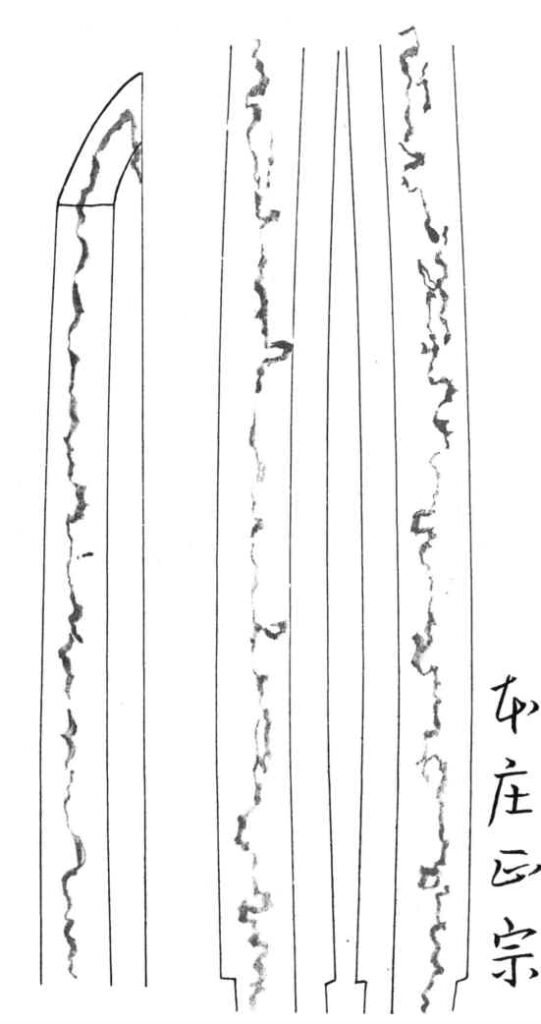The most important of the missing Nihontô is with out a doubt the Honjo Masamune. This was the katana that represented the Shogunate during most of the Tokugawa Era. Think of that! The Tokugawa were able to have virtually any sword in Japan to pass between Shogun, when the power transferred. And they picked the Honjo Masamune.
The Honjo Masamune was also the sword that started me off on this project. In the mid 1980’s Yumoto Sensei asked me and a group of collectors if we had heard of this sword. He further told us that it was reported to be in the Northern California area. I now have reason to believe that another sword believed to be in that area about that time, may have been mistaken for this Masamune. I have been told that one of the important collectors at that time (who is now dead), had a unusual Masamune. And one of the current ‘sword experts’ of that area has some strange ideas as to what a Masamune is. This sword is the same length and general description, but the sori is different, as well as the basic hamon. And it is not a Masamune. Anyway it caused me to hunt down a great deal of information about these missing Nihontô.
This and 14 other nihontô were turned into the Mejiro Police station, in Tokyo, during December of 1945, by the owner Tokugawa Iemasa. Tokugawa Iemasa was a descendant of the Tokugawa Shogunate. January 18th. 1946 the Mejiro Police turned these swords over to Sergeant Coldy Bimore, of the U.S. 7th. Cavalry.
Bob Cole sent me a copy of the relevant pages from a early copy of the Kyoho Meibutsu Cho. This gave me information apparently not available to Albert Yamanaka, when he wrote his article. This katana is mu-mei and attributed to Masamune. The length of the missing katana is 2 shaku 1 sun 5 bu = 65.2 centimeters = 25 11/16th. inches. The sori is 5 sun 5 bu = 1.7 centimeters = 11/16th. inch. It is chû kissaki, with no horimono. This katana was made Kokuhô on May 27th. 1939.
The Missing National Treasure katana – Honjô Masamune that I wrote about last month, has 1 mekugi ana, and a ken-gyô nakago jiri.

The Missing Kokuhô Honjo Masamune
